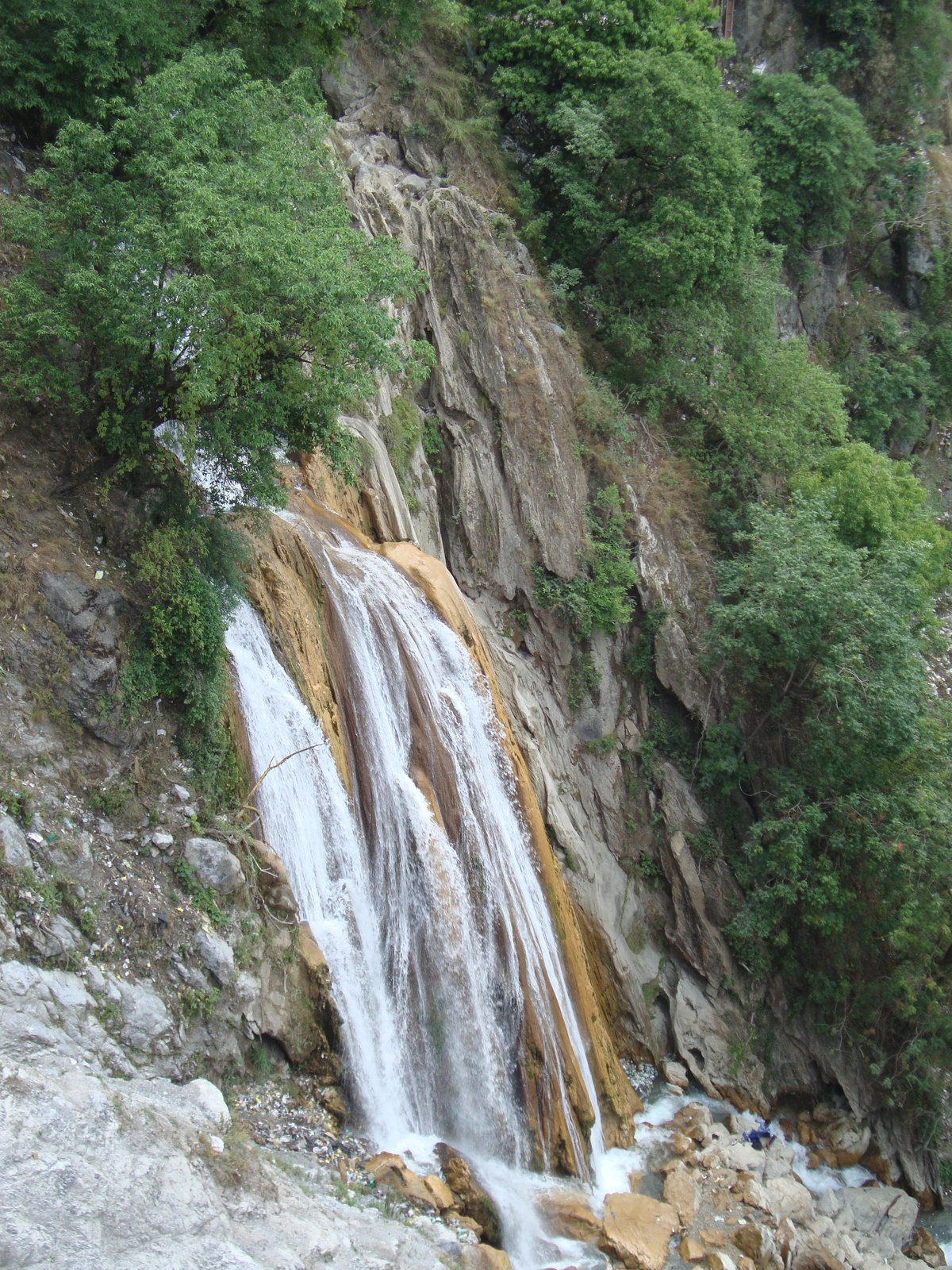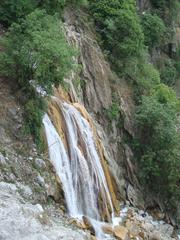
State Highway Mussoorie: Visiting Hours, Tickets, and Travel Tips
Publication Date: 16/07/2024
Overview of State Highway Mussoorie
Welcome to the enchanting hill station of Mussoorie, often dubbed the ‘Queen of the Hills,’ where history, nature, and modern-day amenities blend seamlessly. Located in the north Indian state of Uttarakhand, Mussoorie has been a favorite retreat since the early 19th century. The town’s colonial charm is still evident today, particularly along the historical State Highway of Mussoorie. This comprehensive guide aims to provide visitors with all the essential information needed for an enriching experience, including the highway’s historical significance, must-see sites, visiting hours, ticket prices, and travel tips.

For more detailed information on visiting hours and ticket prices, you can explore resources like eUttaranchal and Tour My India.
Contents
- Introduction
- History and Significance
- Colonial Beginnings
- Strategic Importance
- Post-Independence Development
- Visitor Information
- Visiting Hours and Tickets
- Travel Tips
- Must-See Sites
- Gun Hill
- Camel’s Back Road
- Economic Impact
- Environmental Considerations
- Modern-Day Relevance
- Future Prospects
- FAQs
- Conclusion
Exploring the Historical State Highway of Mussoorie: Visiting Hours, Tickets, and Must-See Sites
Introduction
Welcome to Mussoorie, the ‘Queen of the Hills,’ where history and nature blend seamlessly. This guide will take you through the historical State Highway of Mussoorie, offering insights into its colonial beginnings, strategic importance, and modern-day relevance. Discover visiting hours, ticket prices, and must-see sites along this iconic route.
History and Significance
Colonial Beginnings
Mussoorie has a rich colonial history that dates back to the early 19th century. The town was established in 1823 by Captain Frederick Young, a British military officer captivated by the region’s natural beauty. He built the first British residence, Mullingar, which still stands today as a testament to the town’s colonial past. The State Highway that runs through Mussoorie was initially constructed to facilitate the movement of British troops and officials. This road played a crucial role in the town’s development, making it accessible and attractive to British settlers and tourists alike.
Strategic Importance
The State Highway in Mussoorie has always held strategic importance due to its location. Situated at an altitude of approximately 2,000 meters (6,600 feet) above sea level, Mussoorie served as a summer retreat for British officials escaping the heat of the Indian plains. The highway was essential for transporting goods and people, contributing to the town’s economic growth. During the British Raj, Mussoorie became a hub for education and healthcare, with several schools and hospitals established along the highway. These institutions attracted students and patients from across India, further enhancing the town’s significance.
Post-Independence Development
After India gained independence in 1947, Mussoorie continued to thrive as a popular tourist destination. The State Highway underwent several upgrades to accommodate the increasing number of visitors. The road was widened and paved, making it safer and more accessible. The Indian government recognized the town’s potential as a tourist hotspot and invested in infrastructure development, including the construction of hotels, restaurants, and recreational facilities along the highway. This development not only boosted the local economy but also preserved Mussoorie’s historical and cultural heritage.
Visitor Information
Visiting Hours and Tickets
The State Highway itself is accessible 24/7, but specific attractions along the route may have their own visiting hours and ticket requirements. Notable sites like Gun Hill and Camel’s Back Road are open during daylight hours, typically from 8 AM to 6 PM. Entry to Gun Hill may require a nominal fee, while Camel’s Back Road is usually free to explore.
Travel Tips
- Best Time to Visit: March to June and September to November offer pleasant weather.
- Transportation: Opt for eco-friendly transportation options like electric buses or bicycles to minimize environmental impact.
- Accommodation: Numerous hotels and guesthouses along the highway cater to various budgets.
Must-See Sites
Gun Hill
One of the most notable sites along the highway is Gun Hill, the second-highest point in Mussoorie, offering panoramic views of the Himalayan ranges. Gun Hill has historical significance as it was used by the British to fire a cannon every afternoon to help residents set their watches. (Gun Hill)
Camel’s Back Road
Another important landmark is Camel’s Back Road, a scenic stretch that offers breathtaking views of the sunset and the surrounding hills. This road is named after a rock formation that resembles a camel’s hump and is a popular spot for leisurely walks and photography. (Camel’s Back Road)
Economic Impact
The State Highway has had a profound impact on Mussoorie’s economy. The road has facilitated the growth of various businesses, including hotels, restaurants, and shops, catering to the needs of tourists. The tourism industry is the backbone of Mussoorie’s economy, providing employment opportunities for thousands of residents. The highway also connects Mussoorie to Dehradun, the capital of Uttarakhand, making it a vital trade route for the transportation of goods and services. The economic benefits of the highway extend beyond Mussoorie, contributing to the overall development of the region.
Environmental Considerations
While the State Highway has brought numerous benefits to Mussoorie, it has also posed environmental challenges. The increasing number of vehicles has led to traffic congestion and air pollution, affecting the town’s pristine environment. The local government has implemented several measures to mitigate these issues, including the promotion of eco-friendly transportation options such as electric buses and bicycles. Efforts are also being made to preserve the natural beauty of Mussoorie by planting trees and maintaining green spaces along the highway. These initiatives aim to strike a balance between development and environmental conservation.
Modern-Day Relevance
Today, the State Highway in Mussoorie continues to be a vital artery that supports the town’s tourism industry. The road is well-maintained and equipped with modern amenities, ensuring a comfortable and enjoyable experience for visitors. The highway is also a gateway to several nearby attractions, including Kempty Falls, a popular waterfall located about 15 kilometers (9.3 miles) from Mussoorie. The falls are a major tourist draw, attracting thousands of visitors each year. The highway’s role in connecting Mussoorie to other parts of Uttarakhand cannot be overstated, making it an essential part of the region’s infrastructure.
Future Prospects
Looking ahead, the State Highway in Mussoorie is poised for further development. The local government has plans to enhance the road’s infrastructure, including the construction of bypasses and flyovers to ease traffic congestion. There are also proposals to develop new tourist attractions along the highway, such as adventure parks and cultural centers, to diversify the town’s tourism offerings. These initiatives aim to attract more visitors and boost the local economy while preserving Mussoorie’s historical and cultural heritage.
FAQs
Q: What are the visiting hours for Gun Hill?
A: Gun Hill is typically open from 8 AM to 6 PM.
Q: Are there any ticket fees for Camel’s Back Road?
A: Camel’s Back Road is usually free to explore.
Q: What is the best time to visit Mussoorie?
A: The best times to visit are from March to June and September to November.
Q: How can I reach Mussoorie from Dehradun?
A: The State Highway connects Mussoorie to Dehradun. You can travel by car, bus, or taxi.
Conclusion
In conclusion, the State Highway in Mussoorie is not just a road; it is a symbol of the town’s rich history and cultural significance. From its colonial beginnings to its modern-day relevance, the highway has played a crucial role in shaping Mussoorie’s identity as a premier tourist destination. As the town continues to evolve, the highway will remain a vital link that connects the past, present, and future of Mussoorie. For more updates, follow us on social media or download our mobile app Audiala to enhance your travel experience.
